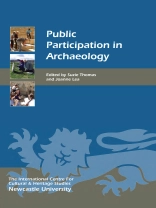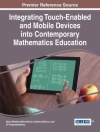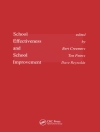An examination of the engagement of the general public with archaeology worldwide.
Across the world public archaeology, the way in which it is understood as well as the way it is practised or delivered, has many facets. In some countries it is not only unknown, but is actively discouraged; in many other places it has been embraced fully and is considered normal practice, whether this appears in the form of so-called ‘community archaeology’, active school and college programmes, (re)thinking the strategies of museums, or as simply encouraging on-site visits and demonstrations during archaeological fieldwork. However, in a difficult economic climate public archaeology is often adversely affected; funding cuts can mean changes in priorities for heritage organisations and local and national governments, and even to the loss of entire projects.
This volume examines the various facets of public archaeology practice globally, and the factors which are currently affecting it, together with the question of how different publics and communities engage with their archaeological heritage. With case studies from across the globe, ranging from Canada to Turkmenistan and from Ireland to Argentina, it presents a contemporarysnapshot of public participation in archaeology, covering both successful initiatives and the threats posed to such opportunities by local, regional and global changes. Particular strands addressed are international models; archaeology and education; archaeology and tourism; and site management and conservation.
Joanne Lea is an educator with the Trillium Lakelands District School Board in Ontario, Canada. Suzie Thomas is University Lecturer in Museology at the University of Helsinki.
Contributors: Shatha Abu-Khafajah, Crystal B. Alegria, Arwa Badran, Michael Brody, Blanca A. Camargo, Joëlle Clark, Mike Corbishley, Jolene Debert, Gaigysyz Jorayev, Thomas Kador, Sophie Lampe, Joanne Lea, Lilia L. Lizama Aranda, Cathy Mac Donald, Natalia Mazzia, Alicia Ebbitt Mc Gill, Jeanne M. Moe, Theano Moussouri, Aino Nissinaho, Alejandra Pupio, Virginia Salerno, Dinç Saraç, Tuija-Liisa Soininen, Suzie Thomas.
Inhoudsopgave
Introduction – Suzie Thomas and Joanne Lea
From ‘Telling’ to ‘Consulting’: a Perspective on Museums and Modes of Public Engagement – Theano Moussouri
Making Archaeological Heritage Accessible in Great Britain: Enter Community Archaeology – Suzie Thomas
Public and Community Archaeology – an Irish Perspective – Thomas Kador
The Scope and Potential for Community Archaeology in the Netherlands – Sophie Lampe
Public Archaeology as a Reflexive Practice: An Argentine Case Study in the Pampean Region – Naty Mazzia
Public Archaeology as a Reflexive Practice: An Argentine Case Study in the Pampean Region – Virginia Salerno
Public Archaeology as a Reflexive Practice: An Argentine Case Study in the Pampean Region – Alejandra Pupio
Accessing Archaeology in the School System: Powerful Partnerships – a Case Study of the Challenges and Rewards for Archaeologists, Teachers and Students [Canada] – Cathy Mac Donald
Hook ‘em When They’re Young: Using Enquiry-Based Learning Workshops in Archaeology – Jolene Debert
Archaeology as Culturally Relevant Science Education: The Poplar Forest Slave Cabin – Crystal Alegria
Archaeology as Culturally Relevant Science Education: The Poplar Forest Slave Cabin – Michael Brody
Archaeology as Culturally Relevant Science Education: The Poplar Forest Slave Cabin – Jeanne Moe
Archaeology as Culturally Relevant Science Education: The Poplar Forest Slave Cabin – Joëlle Clark
Heritage Education in Jordanian Schools: For Knowledge or Profit? – Arwa Badran
Politics, Archaeology and Education: Ancient Merv, Turkmenistan – Mike Corbishley and Gaigysyz Jorayev
Situating Public Archaeology in Crooked Tree, Belize – Alicia Ebbitt Mc Gill
Access to Archaeological Heritage in Mexico: its Impact on Public Participation in Archaeology – Lilia Lizama Aranda
Access to Archaeological Heritage in Mexico: its Impact on Public Participation in Archaeology – Blanca A Camargo
‘They are Hiding it . Why do they Hide it? From Whom, and for Whom?’ Community Heritage at Work in the Post-Colonial Context of Jordan – Shatha Abu-Khafajah
Site Management in Turkey – Dinç Saraç
Adopt a Monument: Social Meaning from Community Archaeology – Tuija-Liisa Soininen and Aino Nissinaho
Public Archaeology in Canada – Joanne Lea












